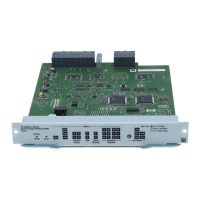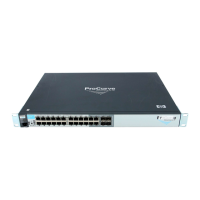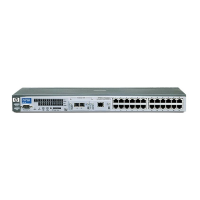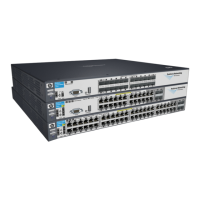Traffic/Security Filters
Filter Types and Operation
This list shows the filter created
to block (drop) traffic from
source port 5 (workstation "X") to
destination port 7 (server "A").
Notice that the filter allows
traffic to move from source port
5 to all other destination ports.
Figure 9-3. The Filter for the Actions Shown in Figure 9-2
Named Source-Port Filters
Beginning with software release M.08.69 you can specify named source-port
filters that may be used on multiple ports and port trunks. As before, a port
or port trunk can only have one source-port filter, but by using this new
capability you can define a source-port filter once and apply it to multiple ports
and port trunks. This can make it easier to configure and manage source-port
filters on your switch. The commands to define, configure, apply, and display
the status of named source-port filters are described below.
Operating Rules for Named Source-Port Filters
■ A port or port trunk may only have one source-port filter, named or
not named.
■ A named source-port filter can be applied to multiple ports or port
trunks.
■ Once a named source-port filter is defined, subsequent changes only
modify its action, they don’t replace it.
■ To change the named source-port filter used on a port or port trunk,
the current filter must first be removed, using the no filter source-port
named-filter <filter-name > command.
9-6

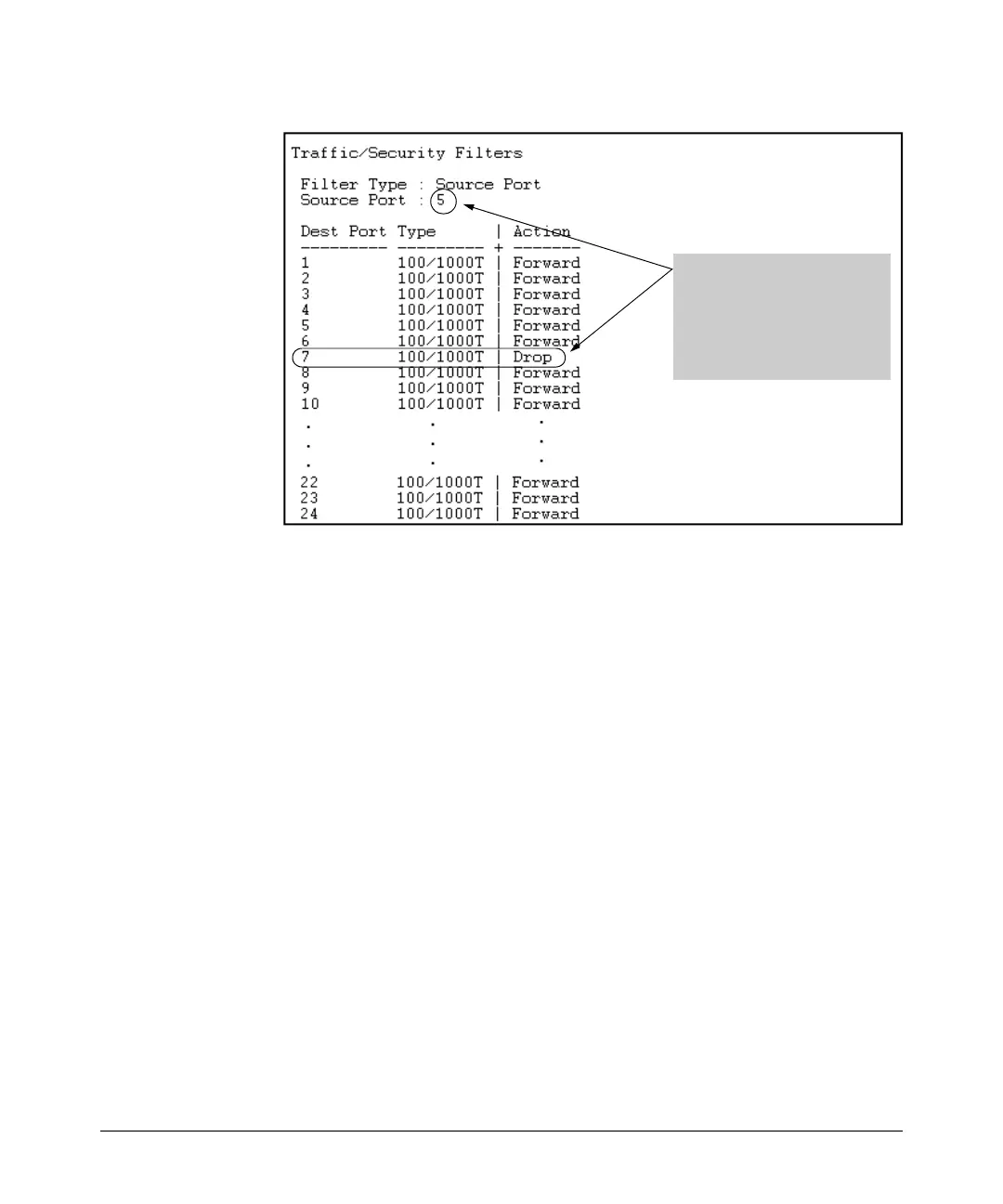